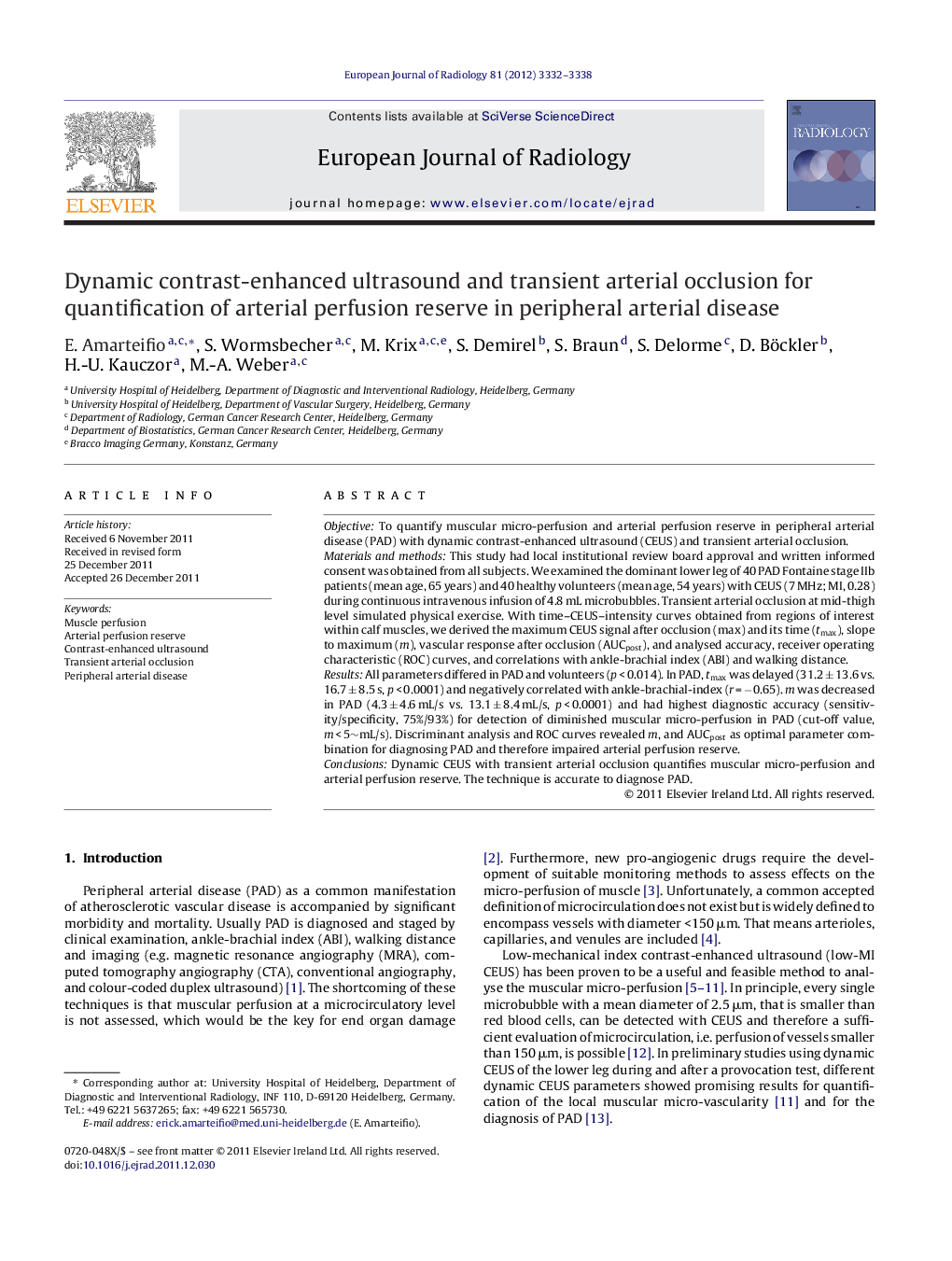| کد مقاله | کد نشریه | سال انتشار | مقاله انگلیسی | نسخه تمام متن |
|---|---|---|---|---|
| 6244301 | 1609784 | 2012 | 7 صفحه PDF | دانلود رایگان |

ObjectiveTo quantify muscular micro-perfusion and arterial perfusion reserve in peripheral arterial disease (PAD) with dynamic contrast-enhanced ultrasound (CEUS) and transient arterial occlusion.Materials and methodsThis study had local institutional review board approval and written informed consent was obtained from all subjects. We examined the dominant lower leg of 40 PAD Fontaine stage IIb patients (mean age, 65 years) and 40 healthy volunteers (mean age, 54 years) with CEUS (7 MHz; MI, 0.28) during continuous intravenous infusion of 4.8 mL microbubbles. Transient arterial occlusion at mid-thigh level simulated physical exercise. With time-CEUS-intensity curves obtained from regions of interest within calf muscles, we derived the maximum CEUS signal after occlusion (max) and its time (tmax), slope to maximum (m), vascular response after occlusion (AUCpost), and analysed accuracy, receiver operating characteristic (ROC) curves, and correlations with ankle-brachial index (ABI) and walking distance.ResultsAll parameters differed in PAD and volunteers (p < 0.014). In PAD, tmax was delayed (31.2 ± 13.6 vs. 16.7 ± 8.5 s, p < 0.0001) and negatively correlated with ankle-brachial-index (r = â0.65). m was decreased in PAD (4.3 ± 4.6 mL/s vs. 13.1 ± 8.4 mL/s, p < 0.0001) and had highest diagnostic accuracy (sensitivity/specificity, 75%/93%) for detection of diminished muscular micro-perfusion in PAD (cut-off value, m < 5â¼mL/s). Discriminant analysis and ROC curves revealed m, and AUCpost as optimal parameter combination for diagnosing PAD and therefore impaired arterial perfusion reserve.ConclusionsDynamic CEUS with transient arterial occlusion quantifies muscular micro-perfusion and arterial perfusion reserve. The technique is accurate to diagnose PAD.
Journal: European Journal of Radiology - Volume 81, Issue 11, November 2012, Pages 3332-3338